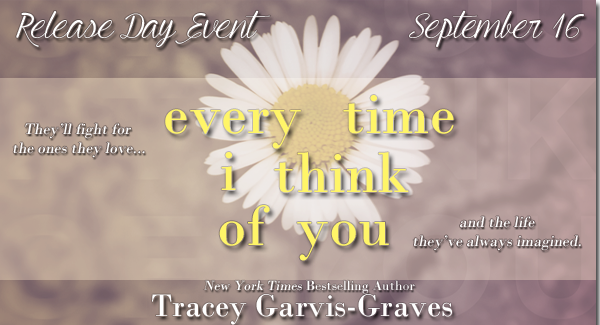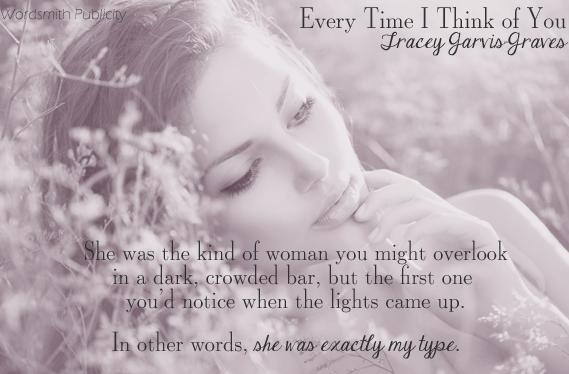
SYNOPSIS
Thirty-year-old Daisy DiStefano has two people she holds dear: the grandmother who raised her, and her three-year-old son, Elliott. But when Daisy’s grandmother is killed in a seemingly random act of violence, Daisy must take steps to protect herself and her child.
Despite a thriving career in San Francisco, thirty-six-year-old Brooks McClain has returned home to spend what little time his mother has left before she succumbs to the deadly disease that is ravaging her. The seasoned investigative reporter has taken a position with the local newspaper and been on the job less than twenty-four hours when he’s summoned to cover the death of Pauline Thorpe.
Brooks is all business, but the more time he spends with Daisy DiStefano, the more invested he becomes; there’s something about a single mother, a defenseless child, and an unsolved crime that has stirred Brooks’s protective instincts like nothing ever has before.
And when the unthinkable happens, Brooks will do whatever it takes to clear the name of the woman he’s fallen for and the child he’ll protect at any cost.
Romantic and suspenseful, Every Time I Think of You shows how far two people will go to fight for the ones they love, and the life they’ve always imagined.
An idea was born.
into various situations (and a little hot water). What would he do? How would he react? What, exactly, was he made of? However, if main character Brooks McClain was going to be a crime reporter, that meant I had to come up with a crime (which ultimately, I’d have to solve). I’ve never written a book with a mystery or suspense element before, but I wasn’t going to let a little thing like that get in the way of telling this story. I’ve said time and time again that I never want to be an author who writes the same book over and
this means learning new things.
ALS ice bucket challenge is merely a coincidence, it makes me happy to know that this devastating illness is receiving such an outpouring of support from the general public.
community.
phone with my cousin Jack, who is a detective with the Des Moines Police Department. Jack was instrumental in explaining the outcomes of all the different scenarios I proposed (naturally, I named the detective character after him). I interviewed three different crime reporters (who all told me slightly different things), and one of them saved me from a potentially embarrassing gaffe.
a small tweak so that it was correct in form.
of jewelry a nurse would be permitted to wear to work and what floor she might work on if she were involved with a particular patient.
However, once I was about a fourth of the way through the first draft, I realized that the character I’d chosen to commit the crime didn’t actually do it.
delete, delete. Sigh.
I told several people that writing this book made my brain hurt (but one of the readers who received an advance copy told me she kept saying to herself as she read it, “This book is so smart!”). When I hear feedback like that, it tells me that everything I did in the name of Every Time I Think of You was worth it.
EXCERPT
I glanced at my watch. “I need to get going.” I stood and Daisy followed me toward the door.
“Don’t hesitate to call the police for any reason. Pay close attention to your surroundings. Keep your door locked. Don’t ever open it without the chain on.”
I paused, once again struck by how alone she seemed. Was anyone watching out for her? “Listen, I don’t mean for this to sound as sexist as it’s going to,
but is there a guy around?”Rarely did I ask such a personal question, especially when the answer was absolutely none of my business.And I’ll admit to being more than just professionally curious as I waited for her answer.“There was, but not anymore,” she said. “It’s just Elliott and me. We’ll be okay. When someone
knocks, I look through the peephole. If I don’t recognize the person, I leave the chain on when I open the door. I also bought a gun.”She said that last part with such nonchalance that it took me a second to process it.“You what?”
I probably said it with a little more force than I should have.She looked taken aback. “Shane helped me pick it out.”I was speechless.
“I’m sorry, but you don’t—”“Look like the type of person who would own a gun?”It was hard to argue with that statement when it was exactly what I was going to say. “Yes.”“I didn’t buy the gun because I wanted to. Frankly, I would rather not own one. They scare me,” she said. “But I bought one anyway because the thought of looking something evil right in the eye and knowing that I’m more than likely going to come out on the losing end of it terrifies me. The fear that I’ll be assaulted, or raped and left for dead, or worse yet, that someone will try to harm my child, is the reason I have this gun. That’s the type I am.”I saw her then, really saw her. Five foot seven, maybe, but small-boned. She was wearing a fitted V-neck T-shirt that emphasized her slight build. I could see the
prominent ridge of her collarbone and the deep hollow at the base of her throat that I suddenly couldn’t stop looking at. She’d be no match for anyone. If she wanted a gun, I was hardly in a position to tell her she couldn’t have one.“I’m sorry,” I said.
“I was out of line. It’s really none of my business what you do.”“It’s okay. Pam reacted the same way you did. But I’m doing everything I can to be a responsible gun owner. I’ve signed up for the safety class so I can learn how to handle the gun. How to shoot it. I’ll apply for the permit as soon as I have my certificate. I’ll go to the shooting range, and I’ll practice.”Taking her to the shooting range was something I could do to help her. It would also give me a chance to spend time with her, which was something that was becoming more
appealing by the minute. I could feel the boundary between witness and reporter starting to blur, but I really didn’t care. It had been a while since a woman had sparked my interest the way Daisy had. “You don’t have to justify anything to me. It sounds like you’re doing everything right,” I said. “I’ll let you
know if I hear anything on the case.”“I would really appreciate that.”Elliott put down his coloring book and ambled across the room. Daisy lifted him into her arms. “You look tired, buddy. Are you ready for your nap?”“I’m not tired,”
Elliott said, yawning and rubbing his eyes.“Oh, my mistake,”
Daisy said, smiling at him. “I think we’ll try a nap anyway, just in case.” She looked at me. “Thanks for stopping by.”“It was no problem.
I’ll see you soon.”As I stepped into the hallway she said, “Brooks?”I turned around.
“Yes?”“Maybe I’m reading this wrong, but you seem to genuinely care about my safety, and I want you to know that I appreciate it. I need all the help I can get.”I met her gaze and held it for a moment. “You aren’t reading it wrong at all. Take care, Daisy.”She smiled and it illuminated her face, making every feature even prettier. She closed the door, and I made my way down the hall.It was true that I cared about Daisy’s safety. Maybe Scott DiStefano had never abused or neglected Elliott, but Daisy’s decision to arm herself made me wonder what he’d done to her.
GIVEAWAY
ONE signed copy of On the Island, Covet, and ETITOY. Also included, a $50 gift card to Barnes & Noble and Amazon. Also, the winner will receive an ARC of Tracey’s next work-in-progress, The Girl He Used to Know (an adult contemporary second-chance romance novel). And finally, Tracey will either use the winner’s name in The Girl He Used to Know (first name or last name only, or the actual real name if comfortable) OR the winner can suggest a name for a character.
About the Author
Tracey Garvis Graves is a New York Times, Wall Street Journal, and USA Todaybestselling author. Her debut novel, On the Island, spent 9 weeks on the New York Timesbestseller list, has been translated into twenty-seven languages, and is in development with MGM and Temple Hill Productions for a feature film. She is also the author ofUncharted, Covet, Every Time I Think of You, and Cherish. She is hard at work on her sixth book.
Tracey loves to interact with her readers and can be found on Facebook and Twitter.



.png)

















